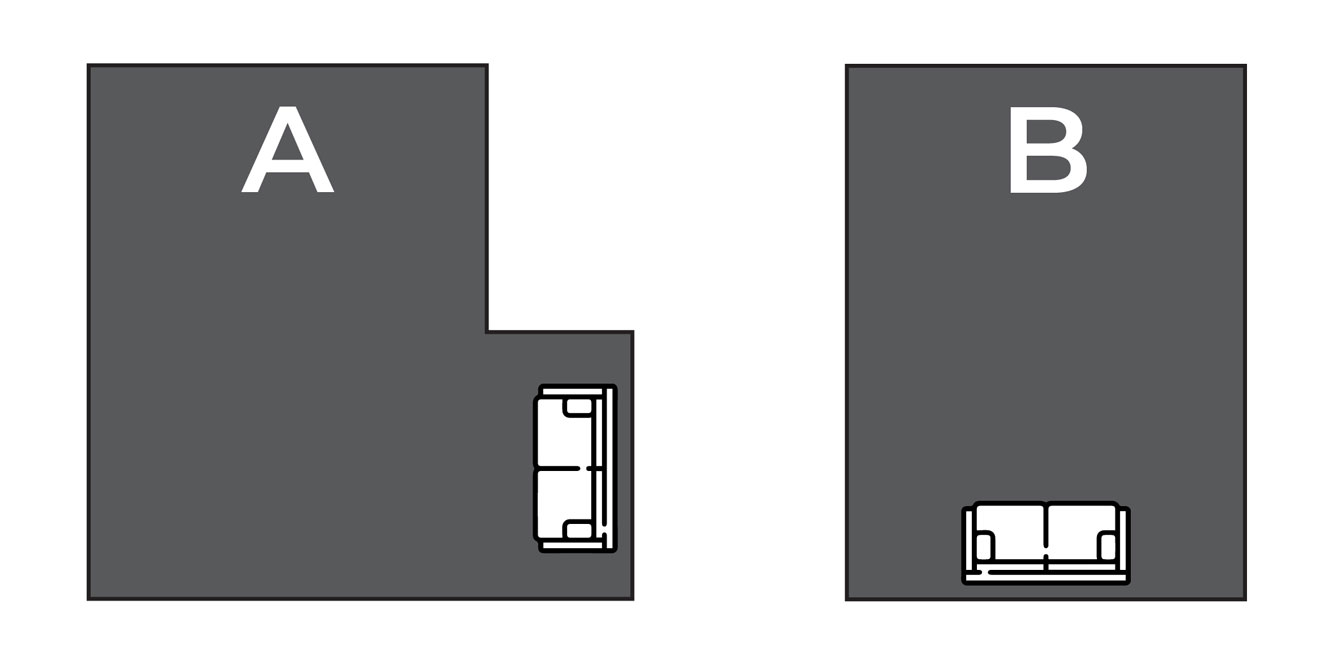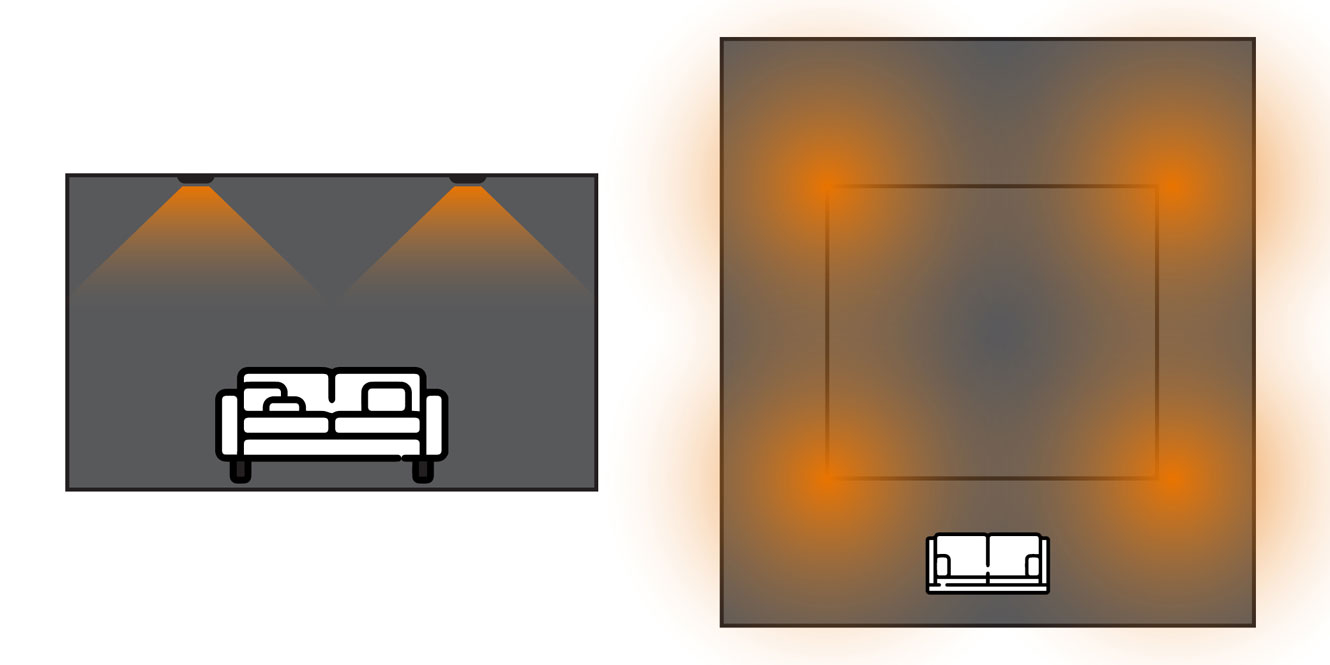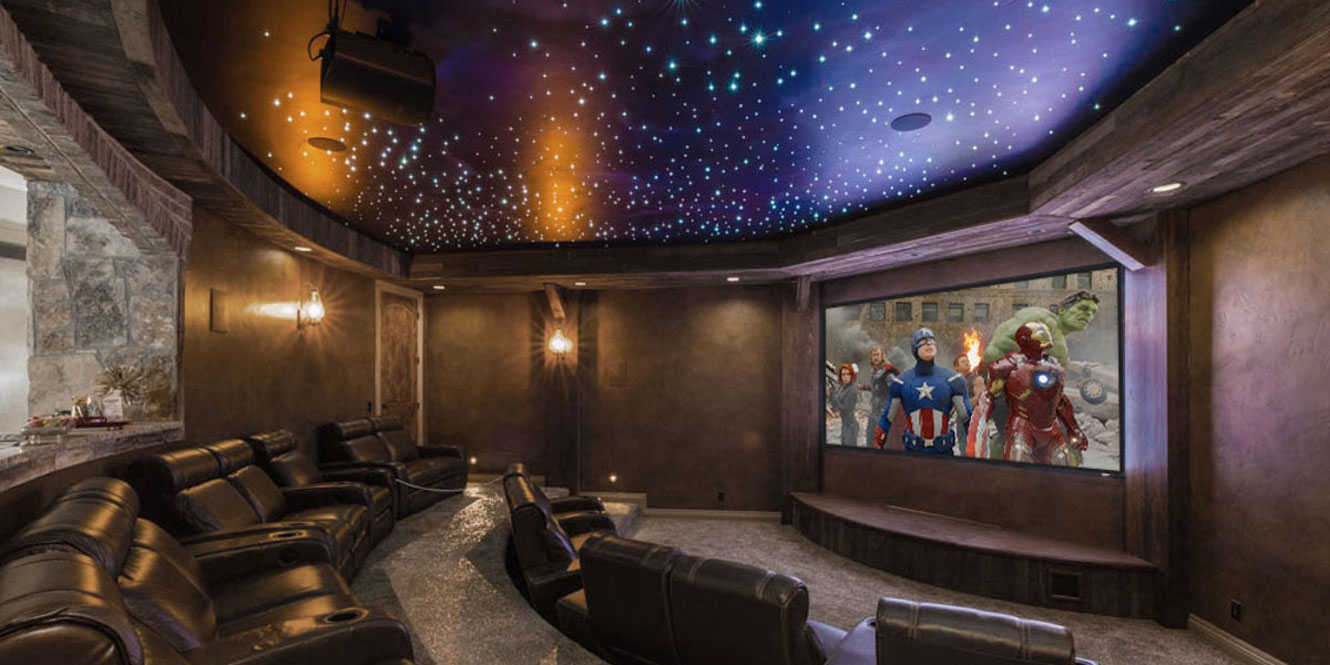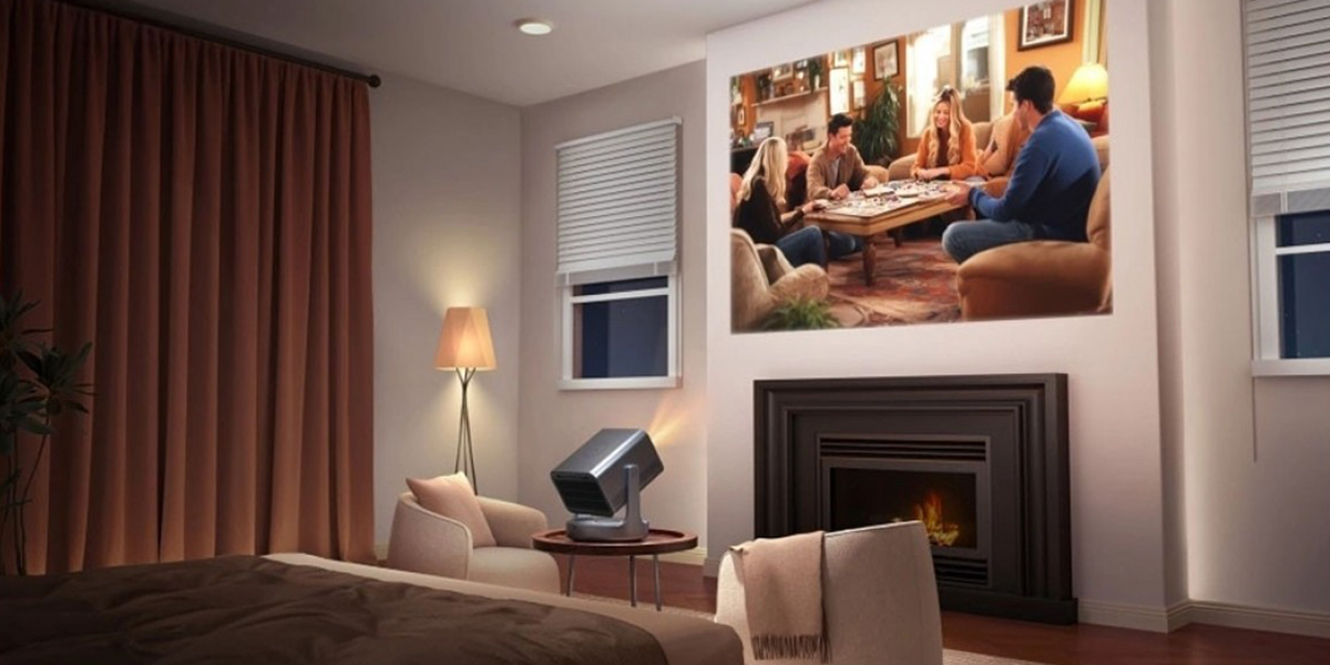Featured image: Creative Commons License by TYM
How many ceiling speakers do I need for an even sound throughout the room? It’s a question many of us have asked! Balancing room size and the number of speakers can seem challenging, but following this simple guide will ensure you can create the ideal invisible stereo speaker system.
It’s important to remember that all rooms are different. However, there are some easy ground rules to follow, such as the height method (we’ll go into that later), that can help you with your setup.
We’ll discuss placement and speaker quality as well as power and control options to set you on the correct path to your perfect in-ceiling configuration.
The bottom line
Want to know at a glance how many ceiling speakers you need? This room size – speaker size – number of speakers chart is based on a listener’s height at 1.2m:
| Room size | Number of speakers (4"-sized speakers) | Number of speakers (6"-sized speakers) | Number of speakers (8"-sized speakers) |
|---|---|---|---|
| <10 m2 | 2 pairs | 2 pairs | Single stereo |
| 10-15 m2 | Up to 4 pairs | 2 pairs | 2 pairs |
| 16-25 m2 | 4 pairs | Up to 4 pairs | Up to 4 pairs |
| 26-35 m2 | Up to 6 pairs | 4 pairs | 4 pairs |
| 36-45 m2 | 6 pairs | Up to 6 pairs | Up to 6 pairs |
| >45 m2 | Up to 8 pairs | 6 pairs | Up to 6 pairs |
Good to know: adding a subwoofer will create more depth. This enables the speakers’ system to piggyback on the subwoofer and generate a wider frequency range. Choose from custom in-wall or traditional subwoofers.
What size ceiling speaker do I need?
Before you decide on how many to install, you need to work out what size of speakers will fit your room best.
Here are the most common ceiling speaker sizes and where they’re used:
- 4” speakers: ideal for smaller rooms or for creating a more spaced out, even spread of sound in a larger room
- 6” speakers: the best of both worlds, these are perfect for any situation, deliver a wide frequency range, and will suit most installations
- 8” speakers: for those who need more audible quality, these bring a much stronger mid- and low-frequency range
How many ceiling speakers do I need?
If you’ve researched online, you may have come across some guides that overcomplicate ceiling speakers for home usage. The main things you do need to consider are the size of your room, how high your ceiling is, and how many amplifiers you’re willing to install to use with those speakers.
Using something like the Harman Kardon Citation AMP will enable you to power two pairs of speakers, while the WiiM Amp Streaming Amplifier will just power one.
It can be a balancing act, as the image shows below. Both rooms are identical in physical volume; however, while room B will work perfectly with a pair of 8” speakers, room A will require four smaller speakers to create a better-balanced sound.

Here’s how many speakers you’ll need per room size:
Smaller rooms (<10 m²): Use either a large single 8” stereo speaker or a pair of 4” or 6” stereo speakers.
Medium rooms (<25 m²): Depending on the shape, medium rooms tend to use four pairs of speakers.
Large rooms (<45 m²): These typically use six pairs of larger speakers to create an even spread of sound across the room. Unusual rooms may require smaller speakers to create an even, gapless sound.
Good to know: Using an 8” single stereo speaker like the Monitor Audio C180 T2 still requires a stereo amplifier and a pair of speakers. It will also bring a wider frequency range and we would suggest using this option over small separate speakers where the room is very small.
How to position your speakers
When planning the location of your speakers, the best practice is to measure twice, cut once. It’s also a good idea to check the brand’s website for a cutout template as these will help you with the correct hole size.
You’ll need the room height and your listening height, too, depending on which height method you use.
So, what’s the height method? Well, it’s the most comprehensive yet simple formula for home use. It enables you to create a simple grid where your speakers ought to be located, and it doesn’t require any complex calculations using TAN or ratios. Phew!
The height method enables you to create what the industry agrees is the ideal speaker coverage calculation. Looking at the images below, you can see how the sound evenly disperses the sound around the room without gaps while minimising reflections.
The room measures 4m x 4.5m giving us 18 m², while its height is 2.4m, giving us a total volume of 43.2³. We also require our listening height, which is simply the height of your ears when sitting in the room. This is typically 1.2m.
The formula you need is as follows:
(ceiling height – ear level) x 2
(2.4-1.2) x 2 gives us 2.4m – this is the minimum distance you should place the speakers from each other.
Note that seating and ceiling heights differ, so be sure to calculate your own.

The alternative height method is to use the room height as your speaker spacing measurement. So, in this case, it would be 2.4m as the minimum spacing, and 4.8m (double) as the maximum spacing.
Both calculations coincidentally give us the same answer, but the alternative also gives us the maximum spacing, which means you can account for any obstructions, such as joists, that stop you from placing the speaker in its ideal location.
We then subtract 2.4m from the room’s width and height and divide each result by 2 to align the grid centrally.
Width – (4m – 2.4m)/2 = 80cm
Length – (4.5 – 2.4)/2 = 105cm
If you’re looking for a commercial option, Yamaha offer a fantastic tool called CISSCA (Commercial Installation Solutions Speaker Calculator), a simulation software that estimates how many speakers you need for pubs, halls, and other large indoor open spaces. This works for the NS-IC Series of ceiling speakers.
Good to know: No speaker should be within a 2-metre distance of each other or 460mm from any wall as this could make the sound worse in your room.
Below are three illustrations of a room set up differently. Illustration A uses too few speakers, while B and C are completely fine.
If your room is like A, it will be easier to upgrade to C rather than B as you’ll be able to resolve any audio gaps without having to cover any holes.

How to power and control your speakers
So, now you’re an expert at speaker placement, let’s discuss what options you have for powering and controlling them. Will you use active or passive speakers? Will you use more than one amplifier? After you’ve answered these questions, you then need to glue them together with a simple control system which the entire family can use.
Speaker Types
Active: This means it has a built-in amplifier like portable Bluetooth speakers do. It requires a mains socket. You might find that one of your speakers needs a speaker cable as it is a slave to the master amplified speaker. Connectivity is usually via Bluetooth connection, and you won’t need an additional external power source.
Passive: Just like any traditional boxed speaker, it requires speaker cable. These tended to have a lower profile enabling easier fitting into more ceilings.
For more information on active vs. passive speakers, read our handy guide here.
Power
Low Impedance: Simply put, this is a traditional stereo amplifier or one of today’s streaming amplifier boxes like the Harman Kardon Citation AMP. Connecting one or two pairs of speakers requires a parallel wiring configuration. Always consult the brand’s manual to ensure it can power more than one set of speakers.
70v or 100v Line: For larger installations like multiroom or large venues, something like the Subzero 240w Multizone would be ideal. The distribution of sound is in a mono configuration and the wiring must be in series. Again, consult the brand’s manual to find out what voltage you need.
Control
Traditional: This will be via a simple remote control like you’d find with a typical stereo or home cinema system.
Bluetooth: Speakers that are Bluetooth compatible are great for the entire household as it means each person can control it from their own smartphone or other device. These are quickly becoming the standard.
Control4: You’ll need to check the products you’re using are compatible with Control4. Knowing how to program is also a must. This is one of the most popular ways of controlling home automation, and there are plenty of self-help YouTube clips out there.
Voice Assistant: If you use Voice Assistant at home, why wouldn’t you use it to control your speakers? Just be sure the amplifier you choose works with your voice-assist system.
What else do I need?
If you’re using a passive system, you’ll need a speaker cable. We suggest getting 10% more than you’d measured for as having too much is better than having too little!
Our ceiling speaker recommendation
Focal 300 ICW8 In-Ceiling Speaker
Although quite expensive, the sound of the Focal 300 ICW8 justifies the price. Truthfully, there isn’t a speaker in the Focal’s entire 300 series I don’t like.
You can partner them with any amplification thanks to their amplifier-friendly design. The sound signature has everything I want to hear from an invisible speaker.
The split installation system also makes them a doddle to install, and when you bring all these factors into focus, you’ll struggle to find a better custom installation speaker.
FAQs
What’s the best speaker layout for ceiling speakers?
Use this simple formula to create a speaker grid: (ceiling height – ear level) x 2. This gives you your spacing measurement between two speakers. Subtract this number from the room’s width and height and divide each result by 2 to align the grid centrally.
How do you calculate ceiling speaker coverage?
One way to calculate ceiling speaker coverage is to measure the room height and use this as the minimum spacing between your speakers.
Is one speaker enough?
If you have a small room under 10msq, one speaker will be enough. Personally, I prefer to use a single lager dual stereo speaker rather than two tiny speakers as the frequency range will bring a more coherent sound and a depth that the two smaller speakers cannot muster.
Final Thoughts
If you were asking yourself, “How many ceiling speakers do I need?”, I hope my guide has helped you create your perfect invisible CI speaker system and that you’ve learnt a few things along the way!
We’ve discussed how to find out how many speakers you might need in your room and how to power them. We’ve also gone through how best to control your speakers, whether it be voice assistant, remote control, or Bluetooth.
Once you follow the information above, you should be able to create a fantastic custom installation system that is sure to wow your friends and family and make you feel a little smug with your accomplishment!
Installing ceiling speakers needn’t be difficult. If you have any further questions, ask away in the comments section below.













0 Comments